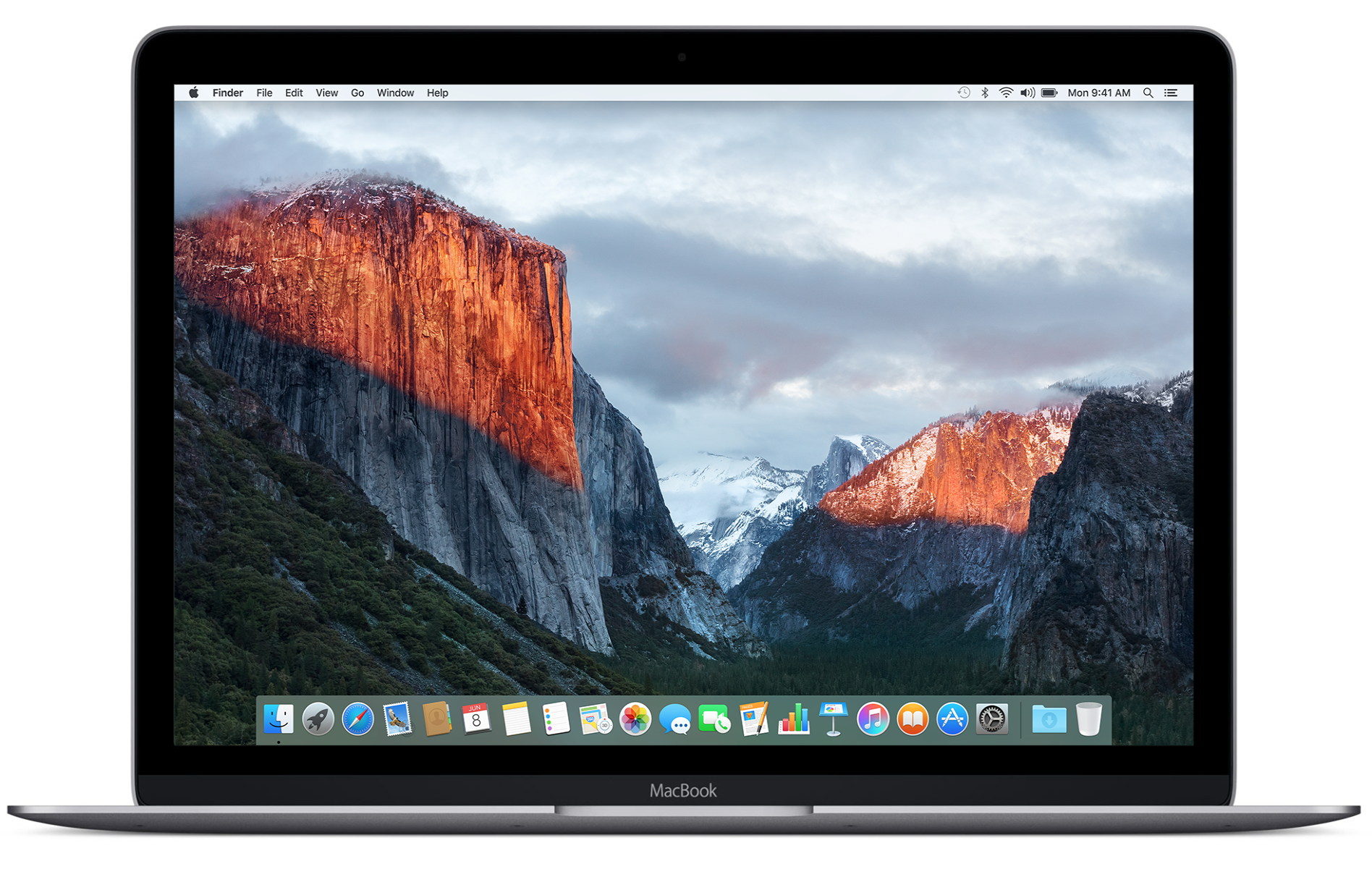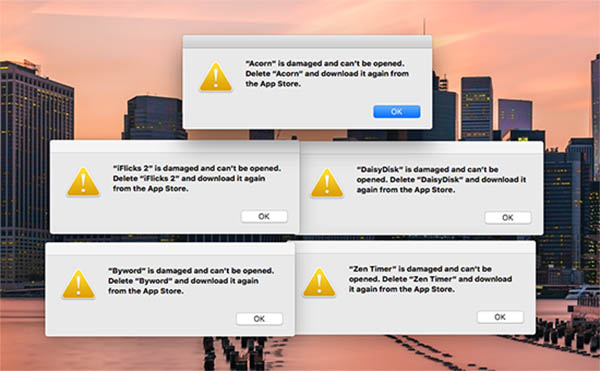Unlike force quitting Apps on Mac, uninstalling Apps on your macOS Sierra or Mac EL Capitan deletes the programs from your Mac or MacBook Pro completely. No matter you want to delete the Apps that you don't use anymore from your Mac or uninstall Apps that have been installed accidentally, you can follow the steps below to uninstall programs on. Oct 24, 2019 Mac Pro introduced in early 2008 or later Xserve models introduced in early 2009. To find your Mac model, memory, storage space, and macOS version, choose About This Mac from the Apple menu. If your Mac isn't compatible with OS X El Capitan, the installer will let you know.
Clean up Safari browser the right way —
If you’ve ever dragged an application to the Trash in order to remove it from your Mac, you’ve been doing it wrong. Why is that? Well, the thing is that apps are more than just their application icon. When you drag an app to the Trash, you leave behind tons of leftover files which end up wasting space on your Mac. This goes for Safari application, as well. So, how are you supposed to completely remove Safari from your Mac?
By uninstalling it, of course!
Mac mail app plist. Turn on your Mac and immediately press and hold the Option, Command, P, and R keys.
So, how to uninstall Safari on Mac?
The answer very much depends on the system you’re running.
If you run OS X Yosemite (10.10) and earlier
For OS X Yosemite 10.10 and earlier OS like Mavericks 10.9, OS X Mountain Lion 10.8, OS X Lion 10.7, and so on, you’re lucky — it’s possible to completely uninstall Safari browser from your Mac in two ways: manually or with CleanMyMac X.
If you run OS X El Capitan (10.11) or later macOS
As for the newer systems, sorry to tell you this, but the farthest you can get is resetting Safari and clearing all the info from it.
In other words: it’s impossible to uninstall Safari in OS X El Capitan 10.11 and macOS Sierra 10.12.
You might be wondering, why so? There is a pretty logical reason for that. Since the release of El Capitan 10.11, Apple introduced System Integrity Protection. It’s a security feature that mostly has your best interests in mind: there is nothing you as a user can accidentally do to damage system files in any way. You cannot possibly delete, disable, uninstall or corrupt anything critical in the whole OS.
On the other hand, you’re deprived of the opportunity to modify anything, for instance delete a pre-installed system app, such as the Safari browser.
Long story short, you can’t completely uninstall Safari. The binary file of the app will remain, even if you remove every associated file and history. However, you can reset Safari browser with an uninstaller tool in CleanMyMac X. It’s a Mac cleaning app that has a reset option for apps, and it will wipe clean all your plugins, history, and cache.
How to uninstall Safari on OS X Yosemite and earlier
Warning: Before we begin, you should know that by removing Safari, you may also be removing critical files that are necessary for Mac system processes and apps which rely on Safari to run correctly. By removing the Safari browser via the steps in this guide, we are in no way responsible for what happens to your Mac when Safari is removed. We understand that you want the application gone, but we must make sure to warn you that it may affect your system and other apps on your Mac negatively, and we are in no way responsible. Just a warning!
A quick way to completely remove Safari from OS X 10.10
Uninstalling apps with CleanMyMac is incredibly easy. It has an Uninstaller module that gets rid of all the little leftovers that ragging an app to the Trash misses. To uninstall Safari and all of its parts with CleanMyMac X, follow these steps:

- Download and install CleanMyMac X(it’s free to download).
- Launch the app.
- In the top menu, choose CleanMyMac X > Preferences.
- Click on Ignore list, then choose Uninstaller on the left.
- Uncheck Ignore system applications.
- Go back to CleanMyMac X and open the Uninstaller tab.
- Find Safari on the list.
- Click on Complete Uninstallation at the top.
- Click Remove button.
And Safari is gone! CleanMyMac X has been beautifully designed to clean out applications and a whole lot more with just a few clicks. It can clean up not just applications, but gigabytes of useless junk on your Mac. CleanMyMac X will save you tons of cleaning time and help you speed up your Mac. So, why wait? Download CleanMyMac X for free and get cleaning!
How to remove duplicate photos from Photos library, automatically and safely. By default, the photos imported to your OS X Photos app are stored in the Photos library in your Mac’s Pictures folder. As a result, if you want to delete duplicate photos on Mac photos app, you need to remove duplicates from the Photos. Delete duplicate photos in mac photos app.
How to uninstall Safari from OS X 10.10 and earlier (manually)
Let’s start by saying (again) that you have to find all the extra files that come with Safari. We can’t just drag Safari to the Trash for two reasons:
- number one, it doesn’t get rid of all the little leftover files;
- number two, “‘Safari’ can’t be modified or deleted because it’s required by OS X,” pops up when you try to delete it.
So, let’s put this into perspective for a second. If you were to remove all the files for Safari manually, you’d have to remove all these types of files (note: look for Safari in the name of the file):
- Binaries, which are located in…
/Applications/ - Dock Icon, which is located in…
/Applications/ - Application Support Files, which are located in…
/Users/YourName/Library/Application Support/ - Plugins, which are located in…
/Users/YourName/Library/Address Book Plug-Ins/ - Caches, which are located in…
/Users/YourName/Library/Caches/
/var/folders/typically-two-numbers-andOr-letters/C/ - Library, which is located in…
/Users/YourName/Library/ - Preferences, which are located in…
/Users/YourName/Library/Preferences/ - Saved States, which are located in…
/Users/YourName/Library/Saved Application State/ - Crashes, which are located in…
/Users/YourName/Library/Application Support/CrashReporter/

Mac Uninstall Apps El Capitan Installer
So again, if you need to completely remove Safari from Mac, you need to delete all these kinds of files. Know that some files may not exist, for instance, is Safari has never crashed on you, it may have no crash files. Also, be sure to look for “Safari” in the file name in the folders mentioned above.
Uninstall Apps On Mac
Please be careful when deleting system files, you never know how it will affect your Mac if you remove the wrong ones (or the right ones for that matter!). However, you always can use an easier way to remove all these files without searching for all the specifics, and that’s by using CleanMyMac. It finds all the leftover pieces you’re likely to leave on your Mac when you delete the apps by dragging them to the Trash.
How to delete Safari data (reset Safari browser) on OS X El Capitan and later
Resetting Safari is deleting all of the information from the browser, leaving it pristine like the first snow. Whatever history, data, extensions or else you had in Safari browser, after resetting it will all be wiped out irreversibly, so think twice if you have anything important stored in there.
- Download and install CleanMyMac X (click here to download it).
- Launch the app.
- In the top menu, choose CleanMyMac X > Preferences.
- Click on the Ignore List, then choose Uninstaller on the left.
- Uncheck Ignore system applications.
- Go back to CleanMyMac and open the Uninstaller tab.
- Find Safari on the list.
- Click on the Application reset at the top.
- Click Remove button.
How to remove Safari data from macOS 10.15 Catalina

Catalina has brought major changes to the operating system we all love. With the good old iTunes app being replaced by Music, Podcasts and Apple TV and other novelties, the release brought a lot of great enhancements to macOS. Safari has been updated too.
New OS requirements don’t make it possible to remove Safari on Mac with CleanMyMac X. But that doesn’t mean that you can’t optimize your Mac’s storage and remove Safari related files. So, to remove those, open CleanMyMac X and go to the menu and select Preferences. Here move to Ignore List and uncheck Ignore system application.
Then you can go to CleanMyMac X’s Uninstaller module and click the down-arrow to see Safari files. Check the items to delete them from your Mac and click Remove.
Mac Os After El Capitan
We hope this guide has helped you, we’re sorry if it didn’t (because you’re running macOS Catalina and just found out that you’ll have to deal with Safari on your Mac forever). Don’t forget to retrieve important info from your browser before uninstalling or resetting it, and have a nice day. Cheers.